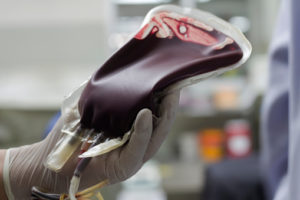To better understand the interplay between donor characteristics, blood product preparation and storage, and patient characteristics on the outcome of transfusion, researchers in California retrospectively analyzed linked donor and recipient data on 38,019 single unit transfusions in 23,194 transfusion recipients. In general, the transfusion of one RBC unit raised hemoglobin levels by 1 g/dL as expected. Donor, blood component and patient factors, however, all contributed to significant variation in hemoglobin increments. Larger hemoglobin increments were observed for transfusion recipients who received RBC units from male donors compared to female donors, those who received whole blood-derived RBC units compared to apheresis-derived RBC units, and those who received unirradiated RBC units compared to irradiated units. RBC storage time did not affect hemoglobin levels after transfusion, but recipient sex, age, BMI, and Rh status all played a role. Larger gains in hemoglobin increments were observed in female recipients and those with lower BMI levels. Further studies on plasma and platelet transfusions could be valuable as the transfusion medicine community further tailors transfusions to individual patients.
Reference:

